Improving Power Conversion Efficiency with Super Barrier Rectifiers
By Shane Timmons, Product Marketing Manager, Diodes Incorporated
For the design of almost any electronics or electrical system, it’s important to maximise power efficiency. In mobile devices, better power efficiency delivers longer battery life, which is a key selling point. For basically any application, improving power efficiency means that size and weight can be reduced, and thermal management simplified – thus reducing costs. Of course, using less power also helps products to meet energy rating requirements, which may be a legal requirement, and an attractive feature for customers.
In many products, the largest gains in energy efficiency can be realised in the power supply or voltage converters used. As a result, over many years, vendors of power semiconductor devices have worked to deliver incremental improvements in energy efficiency.
Now there is a device, based on a proprietary Deep Trench process, that enables power supplies to significantly improve their performance and efficiency: the Super Barrier Rectifier (SBR®). It can be used in exactly the same way as a standard Schottky diode in a wide range of applications—from automotive lighting to renewable energy and consumer products.
In this article, we’ll introduce the SBR, explain its characteristics, and discuss how it could be used in an example application of automotive daylight running lamps.
SBR Technology Explained
SBR is a proprietary and patented technology developed by Diodes Incorporated, which is fabricated using a Metal Oxide Semiconductor (MOS) manufacturing process, as compared to the bipolar process used for traditional Schottky diodes.
The presence of the MOS channel forms a low potential barrier for majority carriers, resulting in forward-bias performance similar to that of a Schottky diode at low voltages. However, the leakage current is much lower due to overlapping P-N depletion layers and the absence of potential barrier reduction.
The SBR is represented by the same electronic schematic symbol as the Schottky diode. In practice, the internal structure is like a MOSFET with the gate and source terminals connected together creating the SBR anode terminal. The MOSFET drain acts as the SBR cathode.
Other than displaying lower leakage with superior temperature stability and avalanche capability, an SBR behaves like a diode in any circuit, and as such it can be used as a drop-in replacement for comparable Schottky devices.
This means that the SBRs deliver immediate improvements in efficiency and a reduction in device case temperature that enables simplified thermal management and greater reliability, which is achieved without needing to redesign a PCB, or add additional components. In addition, SBRs have high surge-current ratings to withstand hazards, such as unpredictable power flow and lightning strikes, and possess the thermal stability and high reliability characteristics of PN epitaxial diodes.
Improving Efficiency with SBRs
In buck-boost converters, Schottky diodes have usually been selected as the most efficient option due to their lower forward voltage drop (VF) and faster switching capability compared to conventional rectifier diodes. On the other hand, their reverse leakage current is relatively high and increases with temperature.
While the SBR behaves like a Schottky diode, the SBR delivers higher efficiency when used in switching converters. Its construction means that the forward voltage and reverse recovery time are comparable, but leakage current is much lower and less dependent on temperature. The avalanche capability is also significantly higher, leading to greater ruggedness.
Table 1 compares the key parameters that govern freewheeling performance for an SBR and a typical Schottky diode with similar reverse-voltage and current ratings. You can see that leakage current is far lower, at 1.7 µA versus 18 µA at 85°C, with the Schottky diode also displaying a larger increase in leakage current at the higher temperature of 125°C.
|
|
Super Barrier Rectifier (SBR10M100P5Q) |
10A/100V Schottky Diode |
|
Typical Forward Voltage VF(V) (IF 1A @ 85°C) |
0.50 |
0.50 |
|
Typical Forward Voltage VF(V) (IF 10A @ 85°C) |
0.70 |
0.72 |
|
Typical Leakage Current IR(µA) @ 85°C |
1.7 |
18 |
|
Typical Leakage Current IR(µA) @ 125°C |
15 |
300 |
|
Avalanche Energy EAS(mJ) |
400 |
20 |
|
IFSM(A)(square, 8.3ms/10ms) |
220 |
200 |
|
Reverse Recovery Time trr (nS) (IF=3A, di/dt=50A/µs, VR=50V @ 85°C) |
28.3 |
33.2 |
|
Reverse Recovery Charge Qrr (nC) (IF=3A, di/dt=50A/µs, VR=50V @ 85°C) |
9.4 |
14.1 |
Table 1: Comparing an SBR with a Typical Schottky Diode
Example Application: Automotive Lighting
LED-based external lighting is fast becoming the norm in automotive applications, in large part due its lower electrical power consumption.
The industry is always looking to further improve the efficiency of LED lighting systems and, in particular, Daytime Running Lamps (DRLs), which remain on continuously while the car is in use, predominantly as a safety feature.
As an ‘always on’ feature, one way to improve LED DRLs is to increase the efficiency of power-conversion that takes place in the LED driver/controller circuitry. A buck-boost topology is typically used in many automotive applications to provide DC-DC conversion, including the drive voltage required for LEDs.
Figure 1 shows a simplified circuit featuring the ZXLD1371 buck-boost LED driver/controller from Diodes Incorporated. This is a generic circuit that normally contains a switching MOSFET (Q1) and a freewheeling diode (D1).
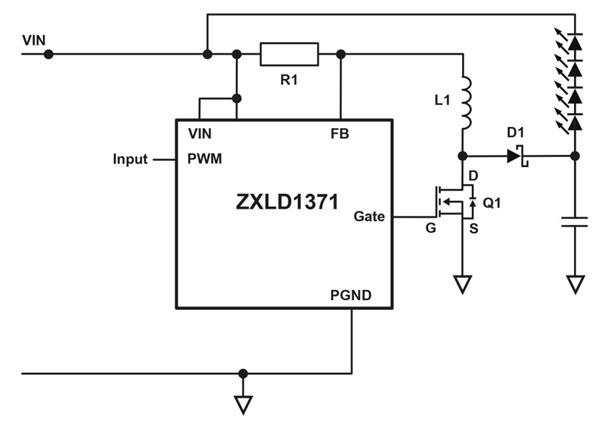
Figure 1. Simplified Schematic of Buck-Boost LED Driver for DRL Application
As this is a boost converter, the peak current in the MOSFET and freewheeling diode is much greater than the average LED current. This means that the conduction and switching losses of these two components can have a significant impact on the overall converter power consumption.
Higher Efficiency, Cooler Running
Table 1 compared the SBR and Schottky diode in identical buck-boost DRL power supplies controlled by the ZXLD1371 LED driver/controller, as shown in Figure 1. In particular, it showed how leakage current is higher for the Schottky diode, and rises more with temperature. This results in the SBR achieving a significant efficiency advantage. This increases at higher ambient temperatures, where the Schottky circuit efficiency reduces by as much as 6%, as shown in Figures 2 and 3.
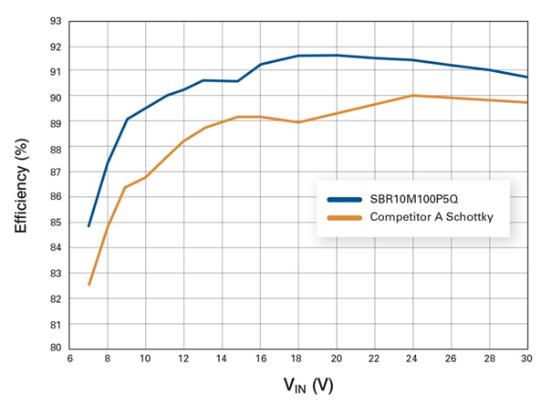
Figure 2. Efficiency Comparison at 25°C Ambient Temperature
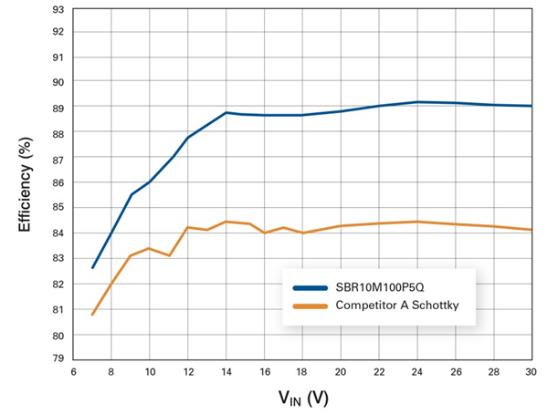
Figure 3. Efficiency Comparison at 85°C Ambient Temperature
Plotting the efficiency of both circuits against ambient temperature (Figure 4) shows that the efficiency reduces with temperature. This is due to a combination of increasing diode VF, leakage current, and switching loss, as well as overall system losses. The SBR’s superior temperature stability minimises this reduction in efficiency, when compared to the circuit using a Schottky diode.
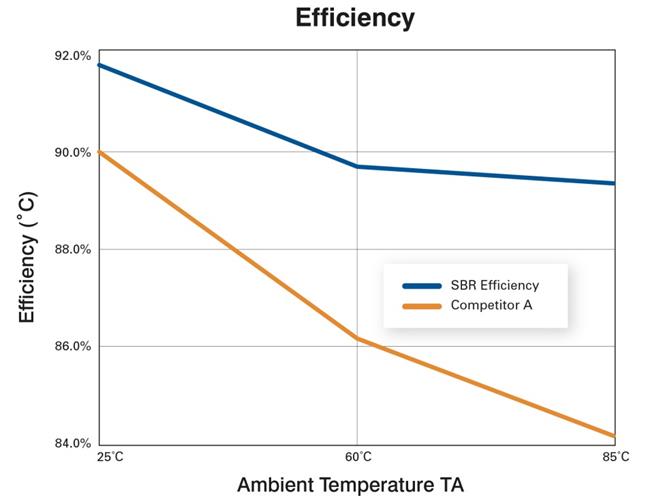
Figure 4. The SBR Efficiency Advantage is Greater at Higher Ambient Temperatures
The SBR’s superior efficiency saves energy, and also reduces device operating temperature. Figure 5 shows how the SBR case temperature is consistently about 5°C lower than that of the Schottky diode across the entire ambient temperature range. In our example of a DRL LED lighting application, this lower temperature gives a designer more flexibility to manage heatsink size and cost, while also achieving the desired system reliability.
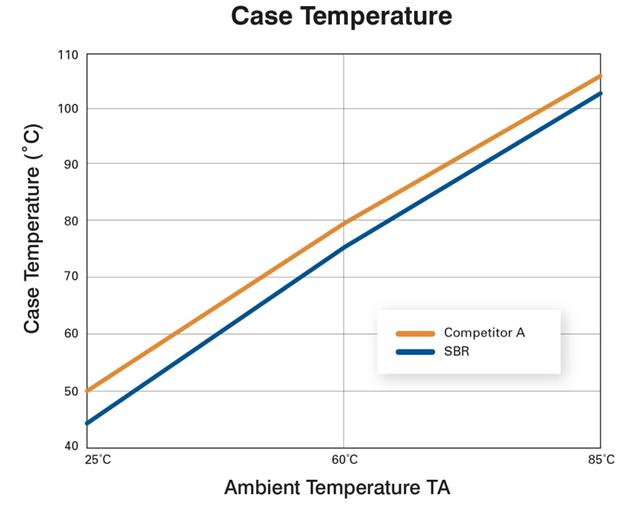
Figure 5. Lower SBR Case Temperature eases Thermal Management and Design for Reliability
Wide Range of Applications
Diodes offers SBRs covering a wide variety of voltage ratings and package styles, making them ideal for many applications in industrial, consumer electronics, communications, and computer systems, including DC-DC conversion, battery chargers, and reverse polarity protection.
Devices in higher voltage ratings, up to 300V, are available for applications such as switched-mode power supplies (SMPS) and solar inverters. For automotive, the Q series of SBRs, including the SBR10M100P5Q, are optimised for specific application requirements, and are qualified to the AECQ101 high-reliability automotive standard and backed by PPAP level 3 documentation.
Another application that can benefit from SBRs’ efficiency is solar panels, where they can replace bypass diodes. Their extremely low VF minimises temperature rise and thus helps to improve system reliability, and the SBRs have a wide operating temperature window that ensures compliance with the solar-industry safety standard IEC 61730-2.
Conclusion
The SBR is a genuine innovation in power semiconductor design, and enables a step-change in power conversion performance and much higher efficiency. Compared to Schottky diodes, it offers reduced leakage current, improved switching performance, comparable or lower VF, and outstanding temperature stability, with the added advantage of cooler operating temperatures.
It can be used as a drop-in replacement, with no re-design required, thus enabling reduced time to market. The SBR delivers superior performance and reliability, thus enabling power converters to meet the latest eco-design objectives and safety standards, across a diverse range of applications.